The 2017 Victory Octane is Fuel for Fun!
Lompoc, California, United States
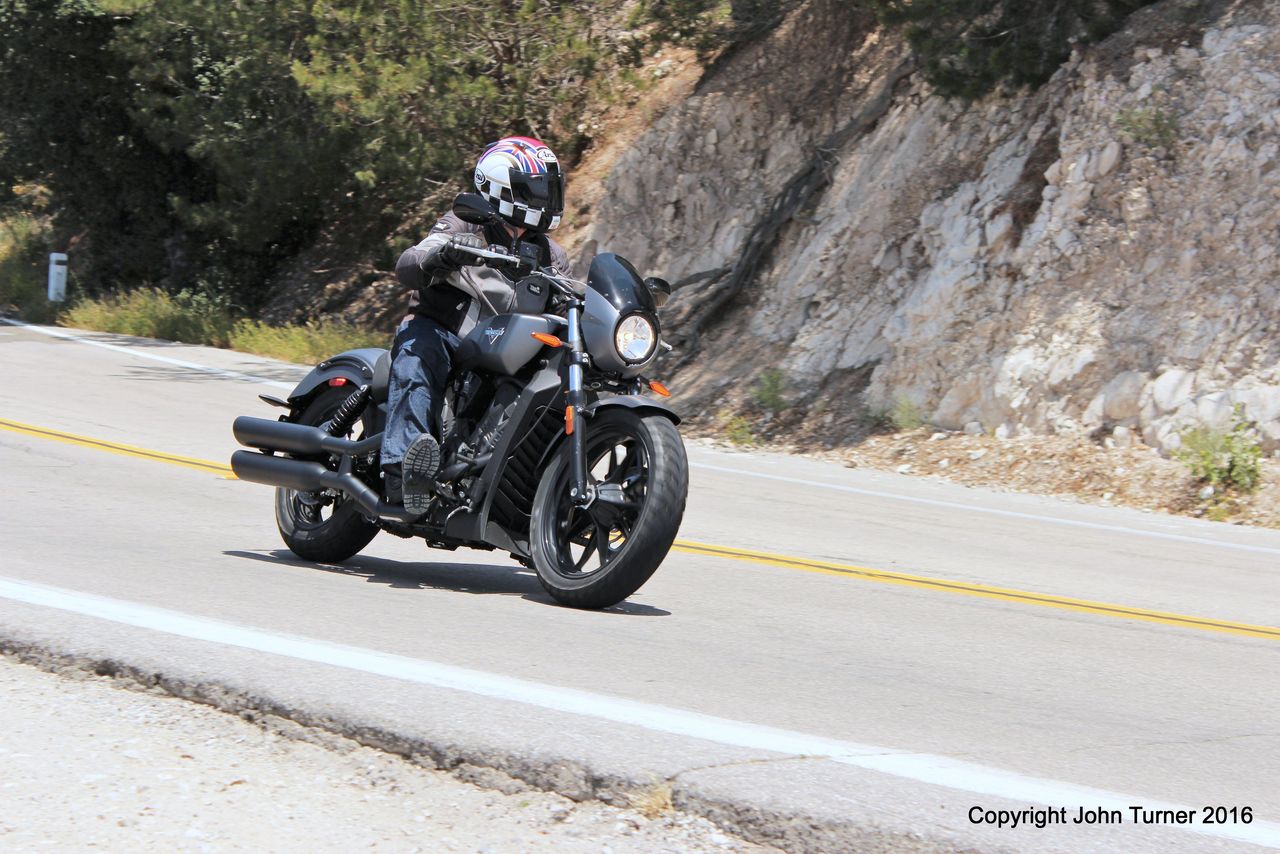
Hustling down the road on Victory's Octane
Words by Andrew Kohn
Photos by John Turner
It’s a Muscle Bike
What comes to mind when you hear the term muscle bike? Do you think about Harley’s V-Rod, or Yamaha’s Star Raider, or maybe Ducati’s X-Diavel? Well, Victory wants you to think of their new muscle bike, the Octane. Victory’s new tagline is “Modern American Muscle”, and the Octane embodies that philosophy.
Though it looks similar in some respects to the Indian Scout, the Octane only shares around 35% of its parts with its Polaris-built sibling. The Octane presents a darker, more sinister profile. The engine is blacked out and uses various shades of black and silver, while the beefy aluminum frame is all black. Black cast wheels and nicely finished matte gray paint complete the picture.
In the pictures initially released by Victory, I felt the Octane looked good, but a little clunky. In person, it’s anything but. This was confirmed at my first gas stop where three different people came up and complimented me on the bike. That trend would continue throughout the test. It’s a very good looking motorcycle!
So before we dive into the test, let’s get one thing straight. When I tested this bike, I compared it against other bikes of its type. This is a low-slung cruiser, not a tourer or a sportbike. Trying to compare this to bikes outside of its genre, as many testers do, will just leave you disappointed. On the other hand, when compared against its true competition, this bike really is a gem.
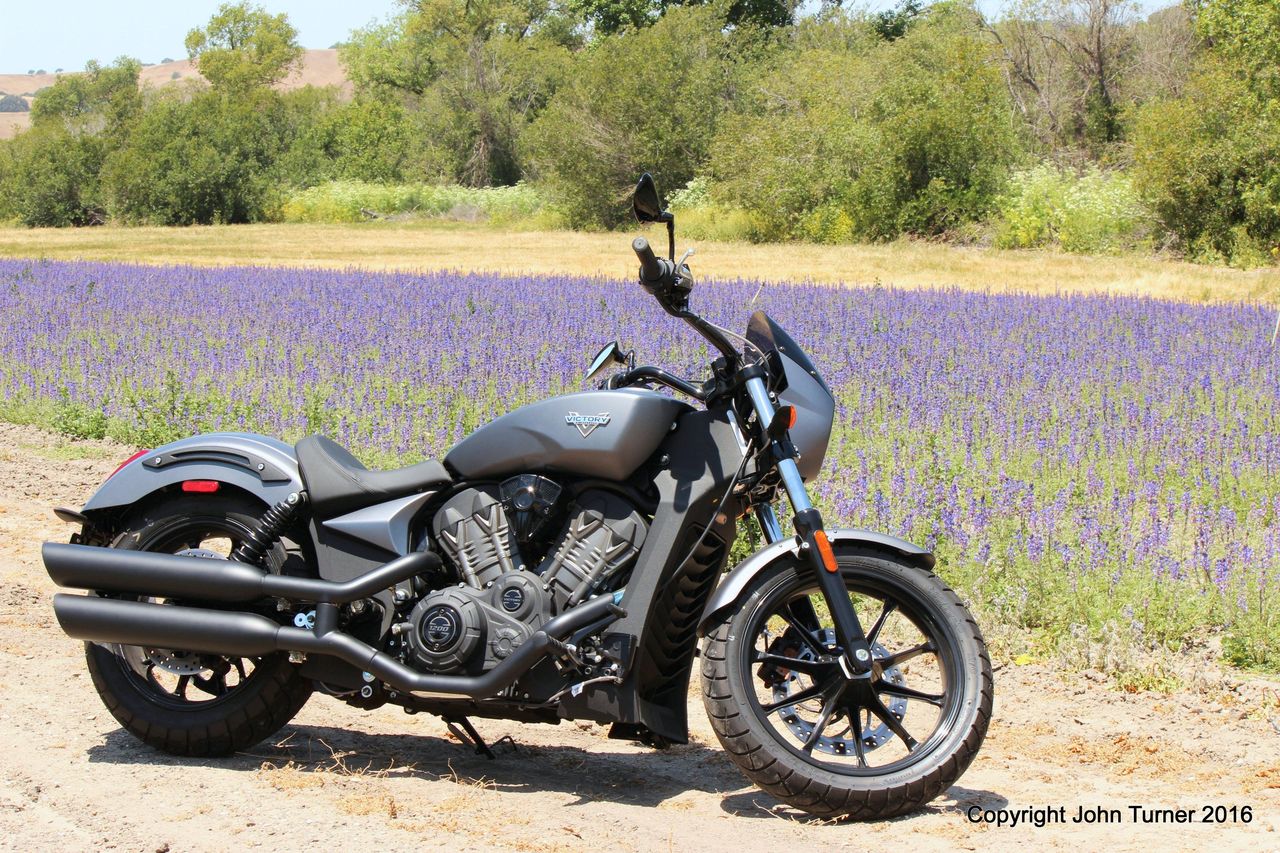
The Octane and its wonderful v-twin powerplant
Oh, that engine!
I won’t go into too many technical details about this motorcycle, as I covered many of those in our initial article about the Octane, but in my mind, the Octane is all about the engine. The 1,179cc V-Twin is similar to that of the engine in the Indian Scout, but uses pistons that are 2mm bigger and provide an additional 46cc of oomph. The Octane also has shorter gearing and different fuel injection mapping, thereby giving it quicker acceleration than the Scout.
Out on the road, the Octane’s engine is simply fantastic! The torque curve of this engine is so flat, you could use it as a table top. At any RPM above 2,000, this engine pulls cleanly and strongly. I lugged down to 25 mph in 6th gear and whacked the throttle open. The engine didn’t shudder or shake. It just built power quickly and cleanly all the way to speeds that I won’t mention here. With a 104hp, 76lb/ft of torque and weighing only 528 lbs dry, the Octane moves down the road at a quick pace. Clutch pull is fairly light and the transmission shifts very smoothly, which frankly, is highly unusual for a v-twin cruiser. There’s so much torque, even at idle, that you don’t need to apply throttle for slow speed maneuvers. Just leave the engine at idle, modulate the clutch, and off you go. Nice!
As I rode this bike through the twisty roads around my area, I found myself riding in a gear higher than I normally would. Vibration is nicely damped through the entire rev range, and since abundant power is always available, I didn’t feel the urge to spin the engine frenetically. On the other hand, if you really feel like pushing hard, the Octane’s v-twin redlines at 8,300 rpm with power available all the way to the rev limiter. Are there faster bikes; yes. Are there many bikes with a nicer motor; no. It’s a really great engine!
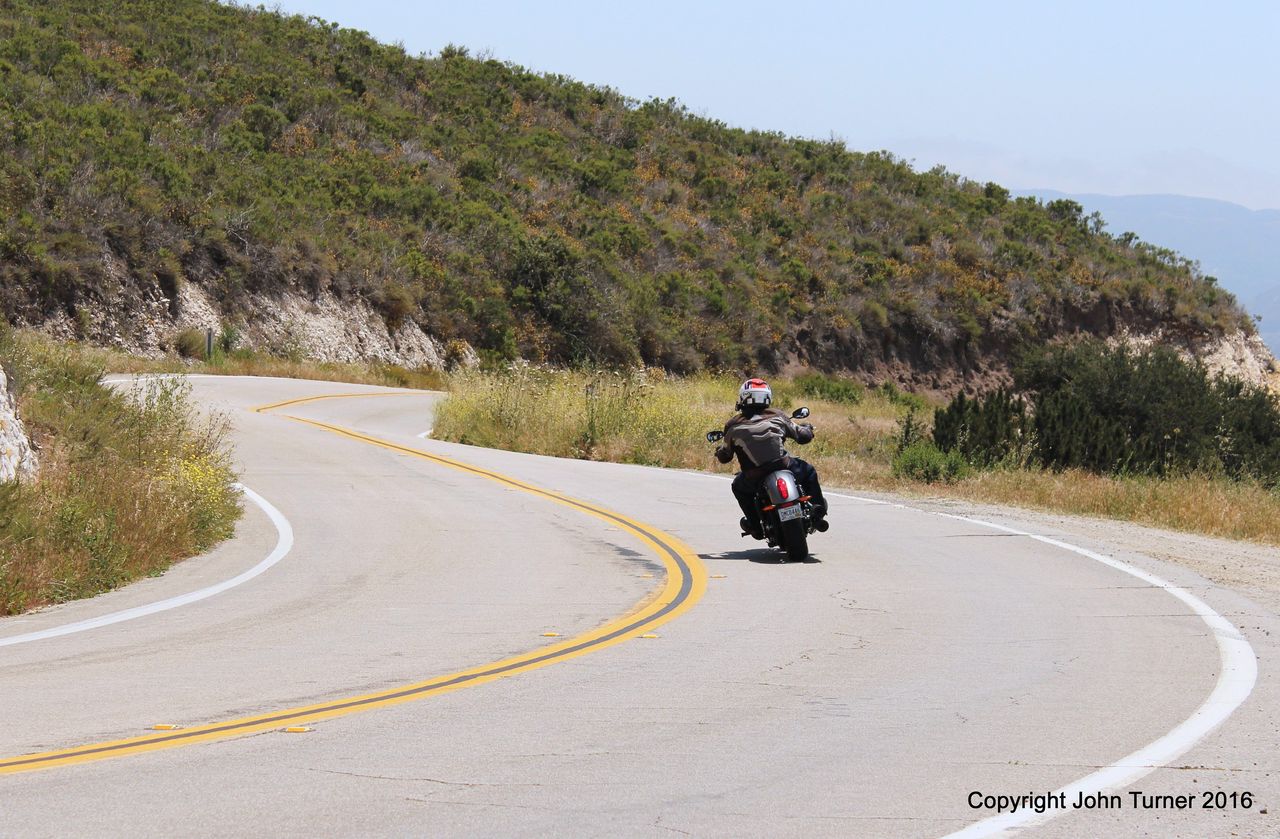
Cruising the twisties
Give me a brake!
Now of course, with all that go, you’d expect to have equivalent whoa, and this is where my strongest criticism of the Octane comes in. The 298mm, two piston front brake and 298mm, one piston rear brake are not nearly strong enough for a bike with this much power. I would describe the stopping power as adequate, but frankly, the Octane either needs a better four piston caliper or a second disc up front. I also find the lack of ABS, even as an option, unsettling. If I’m going to go fast, I want to stop fast, too. The Indian Scout offers ABS as an option; why doesn’t the Octane?
Boy, does it handle!
Though the brakes aren’t great, the handling was a pleasant surprise. The aluminum chassis is stiff, and unlike many cruisers, the frame doesn’t feel like it’s flexing while you’re going through turns. The wide handlebars combined with a reasonably sized 160/70-17 tire on the back and a 130/70-18 on the front, provide quick, yet stable handling. The 62.1 inch wheelbase provides nice stability, but doesn’t hamper handling quickness. The lean angle is also quite good, with around 32 degrees of lean available on either side. Additionally, the Octane’s suspension is good. The 41 mm front fork provides 4.7 inches of travel, while the rear coil-over suspenders have 3 inches. Though the rear suspension is short, it handles most bumps nicely. The only complaint came over sharp bumps, where the suspension is underdamped and provides some pretty significant jolts up your tailbone. Victory offers a set of accessory shocks with piggyback reservoirs and I would definitely consider them if I were to purchase this motorcycle.

The riding position is quite neutral
Long and low
Part of the reason for the short travel shocks is to keep the ride height low. The Octane’s seat height is a very low 25.9 inches. I’m 5’7” with a 28” inseam, and even I found the seat to be very low. At the same time, that low seat imparted great confidence while moving the bike around gravel parking lots and dirt pull offs. The bike is lightweight for a cruiser and carries its weight down low, with the bike coming off the side stand with hardly any effort.
The low seat also gives you the feeling of sitting in the bike, rather than on it. I think that adds to the confidence inspiring handling. Of course, with a very low seat height, it reduces the options for where the foot pegs can go, and the Octane’s are forward mounted in traditional cruiser style. Even with my short legs, I didn’t find the pegs overly far forward and taller riders may want to opt for the extended reach pegs that allow for more leg room.
The nice thing about the riding position on this bike is that it’s not extreme. Many power cruisers put the rider in a clamshell position that’s very taxing on the rider’s lower back. The Octane’s handlebars have reasonable pull-back which allows the rider to sit in a fairly neutral position. With the combination of pegs that aren’t extremely forward, bars that pullback, and a suitably comfortable seat, I was able to ride 100 miles on the Octane before I began to squirm a bit and needed a stretch.
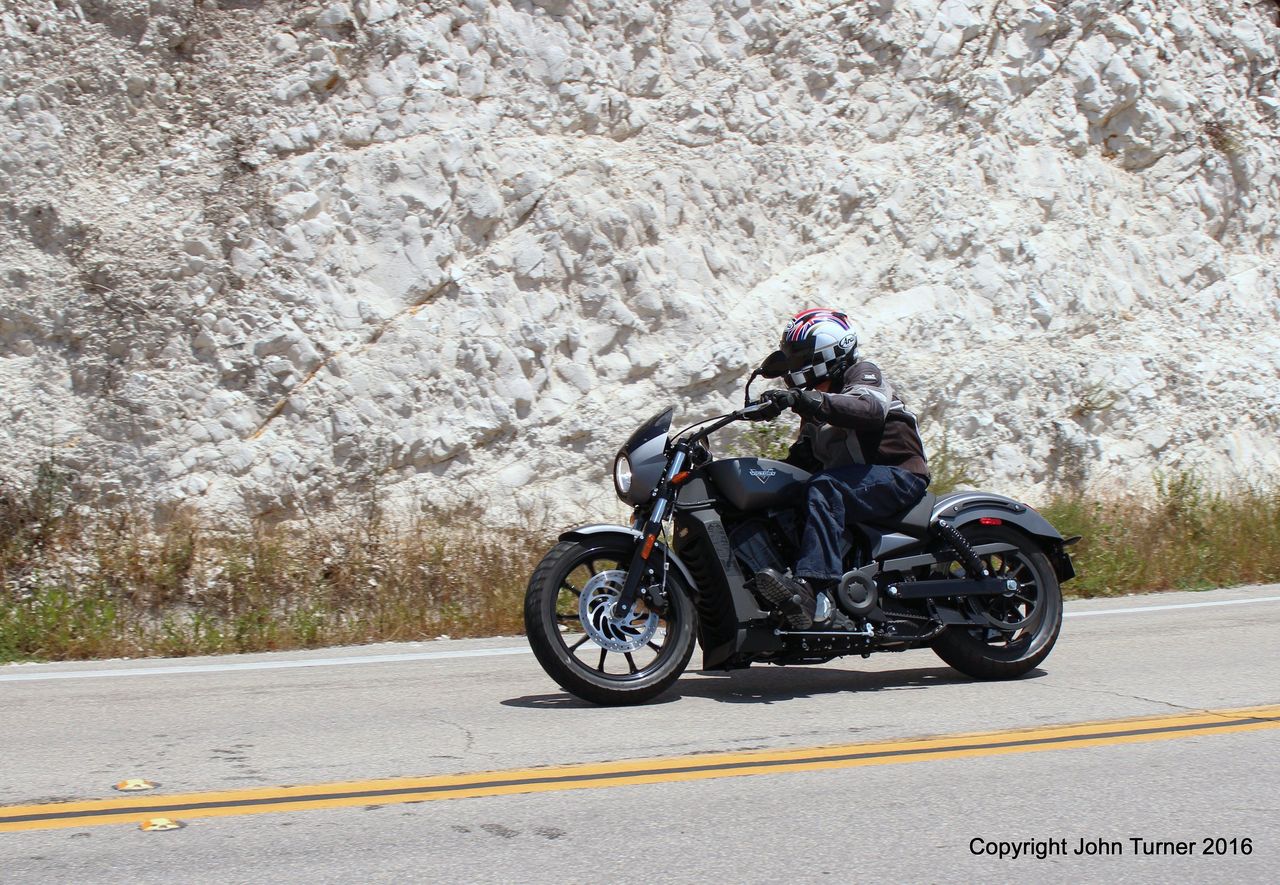
Through the canyons
Details, details…
It’s probably good that the Octane only has a 100 mile seat, as the fuel tank only holds 3.4 gallons. With the bike getting an average of 45 mpg, max range comes pretty quickly around 150 miles. Honestly, even though the Octane is designed for boulevard cruising, I still wish it had a bigger tank. I found myself visiting the gas pumps more often than I would have liked.
At least the Octane does a good job of telling you when it’s getting low on fuel (typically at around 110 miles on the trip meter with around 0.6 gallons left). I found the single instrument pod to be easy to read and the indicator lights, including low fuel, were bright and legible, even in direct sunlight. The instrument pod also provides speed via an analog speedometer and offers engine RPM, gear position, a clock, two trip meters, and an odometer via an LCD screen. The single gauge sits nicely inside the Octane’s small quarter fairing. The fairing does an admirable job of keeping wind off of the rider’s chest, but at highway speeds, you still get a fair amount of breeze around your shoulders. If I were to head out on a longer trip that required a lot of highway riding, I’d consider adding one of Victory’s accessory touring shields.
The turn signals and brake light are LED, are very bright and are worthy of mention. My riding friends commented on how easy it was to see the signals and brake light and I think that’s a nice safety feature. The shapes of the indicators are stylish, so there’s no need to hunt for “cool” aftermarket bits to replace the stock items. The single headlight does a nice job of illuminating the road and provides a well-placed swath of light to ensure good visibility at night.
In addition to good lighting, the Octane’s mirrors are great. Though a little small, they provided a vibration free view of the traffic behind me and were wide enough that my shoulders didn’t block the rearward view.
Even though the Octane’s LED lighting and mirrors are great, I do feel compelled to mention the horn. To be blunt, it’s ridiculous! Yelling at offending cars would be more effective than the anemic beeping of the stock device. Victory isn’t the only offender in this case, so to all of the OEMs, for the love of God, please give us horns that provide adequate sound! OK, enough said.
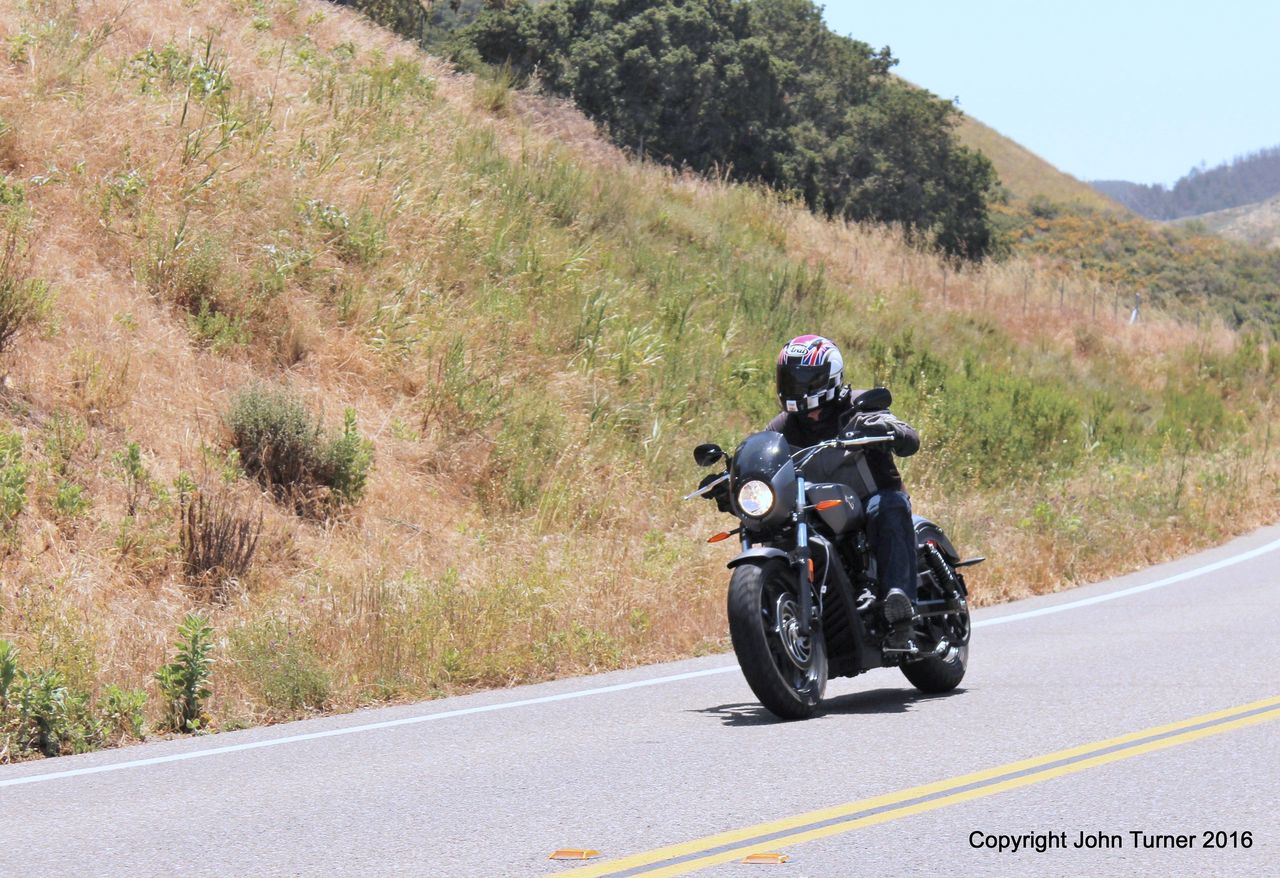
The golden hills of California
Overall riding impression
I had the opportunity to ride the Octane around 800 miles over the space of a week. I did everything from 200 mile highway jaunts, to riding around town, to commuting to work, and riding on my favorite back roads. Through all of it, the Octane was an admirable partner.
The Octane handled highway riding surprisingly well. The small fairing kept the wind off my chest and the engine easily handled cruising on LA’s busy freeways at a constant 80-85 mph. The Octane is also very maneuverable and narrow, which makes commuting in heavy traffic a breeze. Add some saddlebags and you’d have a speedy commuter that could haul a backpack and a laptop.
On the backroads, the Octane is a pleasure to ride. The neutral handling, decent suspension, and smooth motor made short work of the twistiest of backroads, as long as speeds were kept reasonable. This isn’t a sport bike, but the combination of handling and acceleration really are a blast. Even with the more limited cruiser lean angles, riding quickly on a serpentine road was simply a matter of keeping the corner speeds reasonable and then using the broad power band to shoot to the next corner. One morning, I led a group ride that was comprised mostly of sport tourers and none of them complained about my pace on the Octane. It’s a very capable motorcycle.
This is a very easy motorcycle to live with and can be modified to suit the type of riding desired. Victory offers a wide range of accessories for the Octane including windshields, saddlebags, backrests, luggage racks and performance parts. It’s very easy to modify the bike to suit the type of adventure you’re in the mood for. You could easily do some light touring with the Octane if configured correctly.
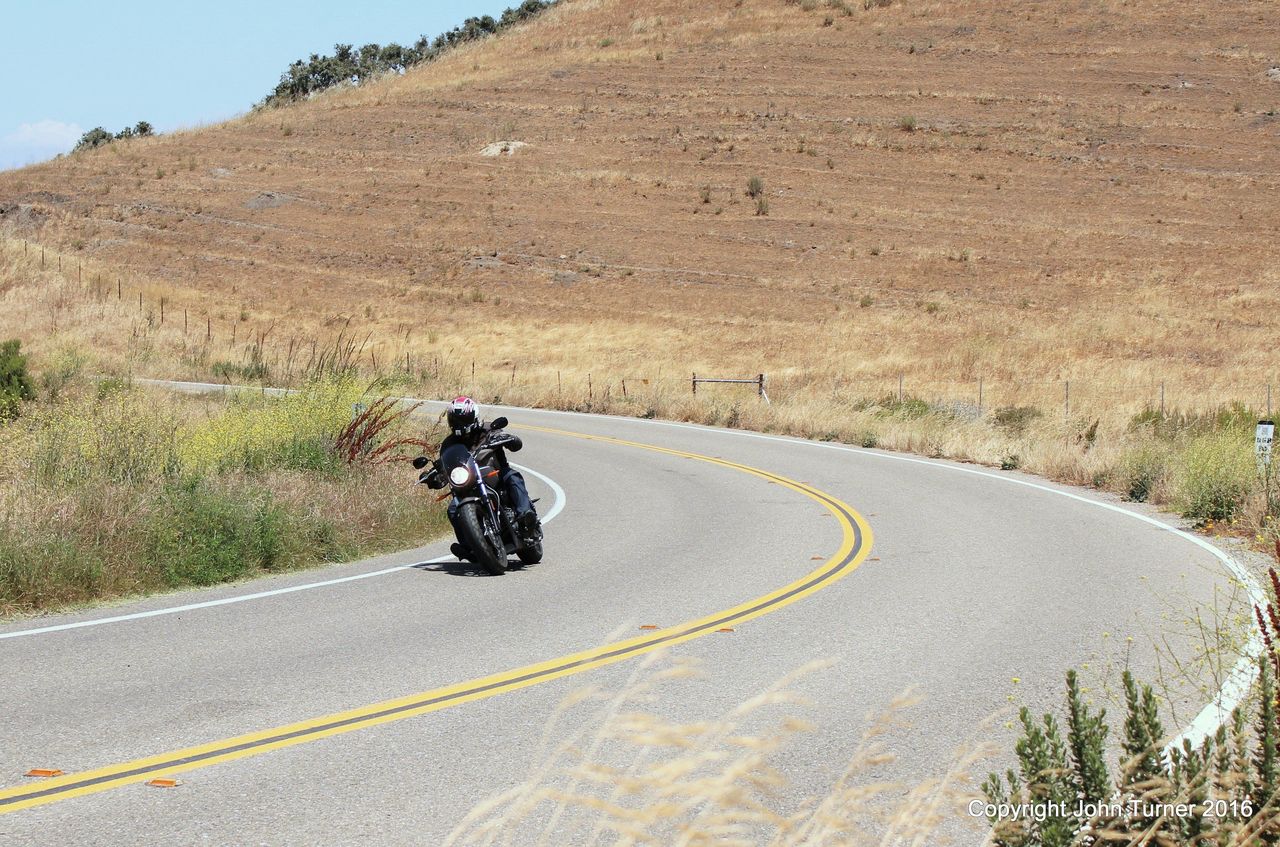
Heading for home on the Octane
So who is this bike for?
In my mind, the Octane should be an appealing motorcycle to a lot of different folks. Short riders and newer riders will definitely appreciate the low seat height. Younger riders will appreciate the style and the attitude. And experienced riders will enjoy the amazing engine and the solid handling. Though I’ve never really considered myself a cruiser guy, I’ve actually found myself missing this motorcycle since I turned it back in to Victory. This is probably the sportiest cruiser I’ve ever ridden.
With a price of $10,499 in the US and $12,499 in Canada, the Octane offers very good value for the money. Are there faster power cruisers out there? You bet there are and they cost thousands of dollars more. The Octane is capable of 0-60 in less than four seconds and the quarter mile in twelve and offers a lot of bang for the buck. Overall, the Octane really shined. It’s versatile, fun, sporty, and reasonably priced. What’s not to like?
Thumbs up:
Smooth and powerful engine
Light weight (for a cruiser)
Sporty handling
Aggressive styling
Did I mention the engine?
Thumbs down:
Brakes need more power
Small fuel tank
Rear shocks over sharp bumps
THE SPECS:
ENGINE
Engine type: Liquid-cooled 60° V-Twin
Valve Train: DOHC, 4 valves per cylinder
Displacement: 1179.3cc
Bore and Stroke: 101.0 x 73.6mm
Compression Ratio: 10.8:1
Horsepower: 104 HP/77 KW @ 8000 RPM
Torque: 76 FT-LBS/103 NM @ 6000 RPM
Fuel System: EFI with single 60mm throttle body
Exhaust: Dual slash-cut mufflers with common volume
Clutch: Wet, multi-plate
Transmission: 6-speed
Final Drive: Belt
Fuel Capacity: 3.4 gal.
Oil Capacity: 4.5 qt
SUSPENSION
Front Suspension: 41mm damper-tube forks with dual-rate springs; 4.7-in. travel
Rear Suspension: Twin shocks with dual-rate springs, adjustable for preload; 3.0-in. travel
CHASSIS
Frame: Cast-aluminum semi-double-cradle with tubular-steel backbones
Lean Angle: 32°
Rake/Trail: 29.0°/5.1 in.
Wheelbase: 62.1 in.
Seat Height (Laden): 25.9 in.
Dry Weight: 528 lb. (North America) / 534 lb. (International)
WHEELS / TIRES / BRAKES
Front Brake: Two-piston caliper, 298mm disc
Rear Brake: One-piston caliper, 298mm disc
Front Tire: 130/70-18 63H
Rear Tire: 160/70-17 76H
Front Wheel: 18 X 3.5-in. cast, 10-spoke
Rear Wheel: 17 X 4.5-in. cast, 10-spoke
PRICE
$10,499 (US), $10,749 (Calif.)
$12,499 (CAN)
LINKS
You must be logged in to comment
Login now
I had the pleasure of following the author's rides on the Octane while riding my FJR1300 and saw it a pleasure to ride behind. It performed admirably in the twisties and accelerating to highway speed was effortless. This bike is a very capable machine that will surely please its rider. Two thumbs up!